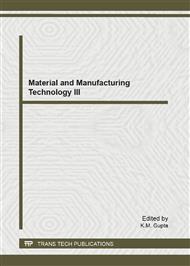p.753
p.758
p.762
p.767
p.775
p.780
p.784
p.788
p.792
Network Performance Comparison between Linear and Hybrid Topology Structure of WSN in Coal Mining Equipment
Abstract:
This paper analyzes the characteristics of current monitoring wireless sensor networks for coal mine safety and two kinds of typical system network architecture of mining working face in coal mine firstly, and then analyzes the network performance of the two kinds of network system theoretically. In order to compare the performance of WSN adopting linear topology and hybrid topology, we build the simulation model using NS2 to evaluate the performance through three indexes, i.e. total energy consumption, packet loss rate and average transmission latency. The research results show that the network adopting hybrid topology has better energy efficiency, and the network adopting linear topology has better performance in packet loss rate and average transmission latency.
Info:
Periodical:
Pages:
775-779
Citation:
Online since:
July 2012
Authors:
Price:
Сopyright:
© 2012 Trans Tech Publications Ltd. All Rights Reserved
Share:
Citation:


